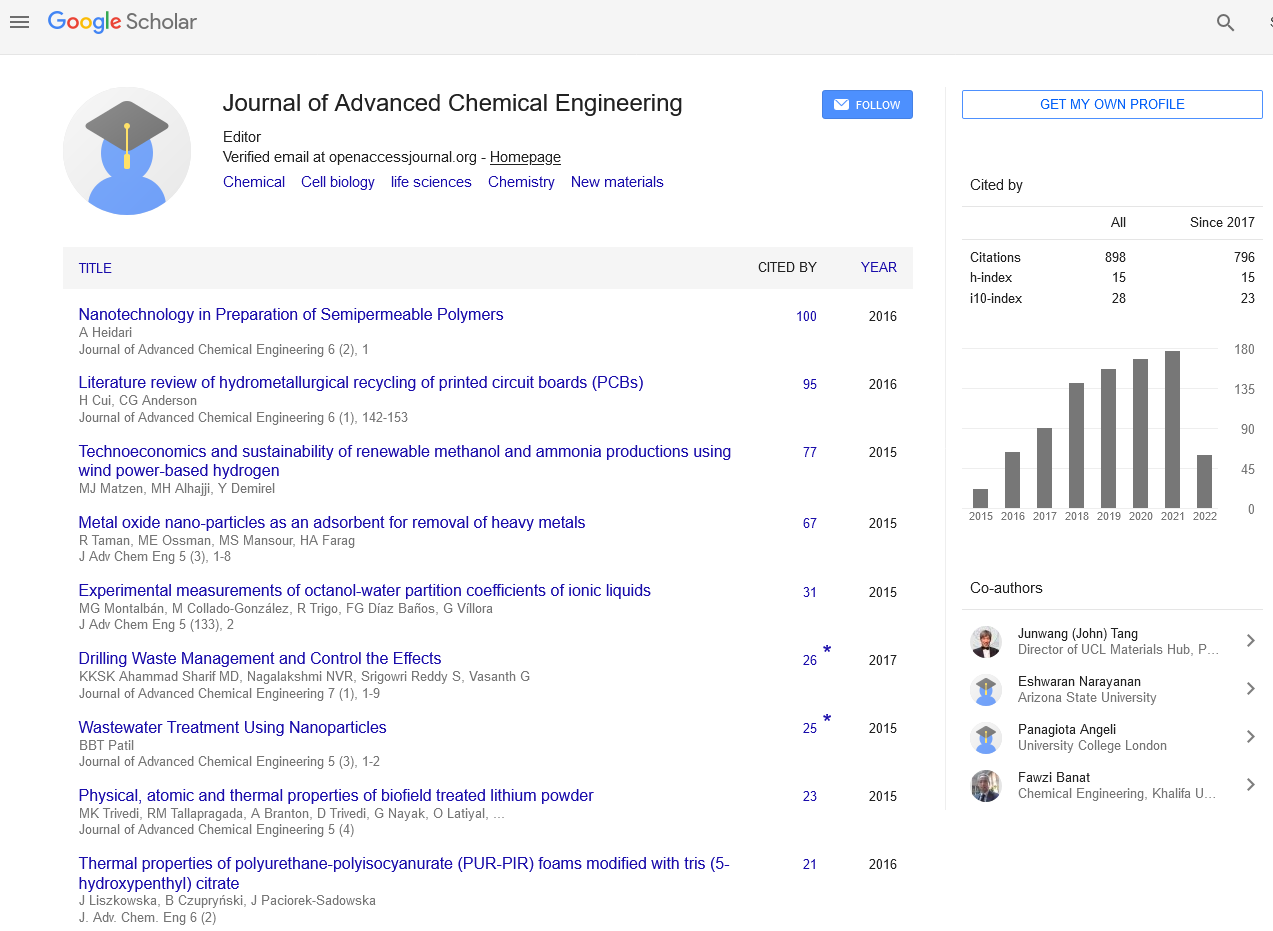Indexed In
- Open J Gate
- Genamics JournalSeek
- Smithers Rapra
- RefSeek
- Directory of Research Journal Indexing (DRJI)
- Hamdard University
- EBSCO A-Z
- OCLC- WorldCat
- Scholarsteer
- Publons
- Geneva Foundation for Medical Education and Research
- Google Scholar
Useful Links
Share This Page
Journal Flyer

Open Access Journals
- Agri and Aquaculture
- Biochemistry
- Bioinformatics & Systems Biology
- Business & Management
- Chemistry
- Clinical Sciences
- Engineering
- Food & Nutrition
- General Science
- Genetics & Molecular Biology
- Immunology & Microbiology
- Medical Sciences
- Neuroscience & Psychology
- Nursing & Health Care
- Pharmaceutical Sciences
Ceramic bricks from mixtures of clay and peanut shells
2nd World Congress on Biopolymers
August 04-05, 2016 Manchester, UK
Nancy Quaranta, Marta Caligaris, Gisela Pelozo, Adrian Cristobal, Rocío Schefer and Leonardo Torrico
National Technological University, San Nicolás, Argentina
Mar del Plata National University, Argentina
Posters & Accepted Abstracts: J Adv Chem Eng
Abstract:
In this work, a biomass waste, peanut shells, were characterized in order to analyze the possibility of its use as a potential raw material for the manufacture of ceramic materials for the civil construction industry. The residue was characterized using various techniques such as optical and electronic microscopy, X-ray electron dispersive analysis, analysis of particle size distribution, among others. The ceramic pieces were obtained from green bodies manufactured with mixtures of commercial clay and 5%, 10% and 15% in volume of ground and dry residue, formed by uniaxial pressure of 25 MPa, with addition of 8% in weight of water, into moulds of 70 mm x 40 mm x 15 mm. After a drying period, the samples were heat treated at 950°C following curves similar to those used in the ceramic industry. The DTA-TGA analysis showed a slight loss of water adsorption, and then from 300°C to 550°C, some exothermic peaks, that have been assigned to decomposition reactions and combustion of the biopolymers that compose this organic waste material. The weight loss recorded in these tests is greater than 97%. This indicates that when the waste is incorporated in the clay mixture for the manufacture of ceramic bricks, the residual material finally included after the sintering process is less than 3%. The obtained products have good physical and mechanical properties, with acceptable values of porosity, modulus of rupture, permanent volumetric variation and weight loss on ignition. The sample with 15% of added waste presents a low sinterization grade at this treatment temperature.
Biography :
Nancy Quaranta obtained her PhD in Chemistry at the Universidad Nacional del Sur, Argentina. She is a Researcher of the Scientific Research Commission of Buenos Aires Province. She is the Head of Environmental Studies Group and Materials Program Coordinator at the National Technological University. Her current research fields are materials and environmental sciences.
Email: nquaranta@frsn.utn.edu.ar


